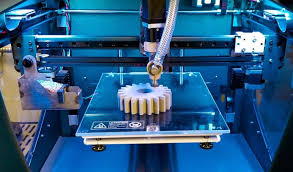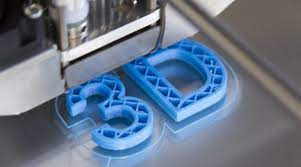
The advent of new high-speed micro-scale 3D printing technology is expected to promote the development of biomedicine and other fields titanium weld
Researchers at Stanford College in the United States have actually established a new high-speed micro-scale 3D printing modern technology – roll-to-roll constant fluid user interface production (r2rCLIP), which can publish 1 million extremely great and adjustable micro-particles per day. This success is expected to advertise the development of biomedicine and various other fields. The appropriate paper was published in the most recent concern of “Nature” on the 13th.
(3d printer)
Microparticles created by 3D printing technology are widely made use of in areas such as medication and vaccination delivery, microelectronics, microfluidics, and complicated production. Nevertheless, mass personalization of such particles is very challenging.
r2rCLIP is based on the continual fluid user interface manufacturing (CLIP) publishing technology created by Stanford University’s DiSimone Laboratory in 2015. CLIP utilizes ultraviolet light to strengthen the material swiftly right into the preferred form.
The leader of the latest research study, Jason Kronenfeld of the Disimone Research laboratory, discussed that they initially fed a piece of film right into a CLIP printer. At the printer, numerous forms are all at once printed onto the film; the system after that proceeds to clean, cure, and eliminate the shapes, every one of which can be customized to the desired form and material; finally, the film is rolled up. The whole process, therefore the name roll-to-roll CLIP, allows automation of distinctively shaped particles smaller than the width of a human hair.
(metal powder 3d printing)
Researchers claimed that prior to the development of r2rCLIP, if you wanted to publish a set of big particles, you required to refine it by hand, and the procedure progressed gradually. Now, r2rCLIP can create up to 1 million bits per day at unprecedented speeds. With new innovations, they can currently rapidly develop microparticles with more complex forms utilizing a variety of products, such as porcelains and hydrogels, to create hard and soft bits. The tough bits can be made use of in microelectronics producing, while the soft fragments can be utilized in medicine shipment within the body.
The study team explained that existing 3D printing innovation needs to find an equilibrium in between resolution and speed. Some 3D printing technologies can create smaller nanoscale particles yet at a slower rate; some 3D printing technologies can manufacture large items such as footwear, family things, device parts, football headgears, dentures, and hearing aids, but they can not publish Fine microparticles. The brand-new method locates a balance in between making speed and fine range.
About Kmpass
Kmpass is committed to technology development, applications of nanotechnology and new material industries, with professional experiencein the nano-technology research and development and the application of materials.especially for 3d printing powder, 3d printing metal powder, 3d printing powder supplier, 3d printing for titanium powder. As a leading nano-technology development and product applications additive manufacturer, Kmpass dominates the markets. If you need high quality titanium weld, please feel free to contact us.
Inquiry us


